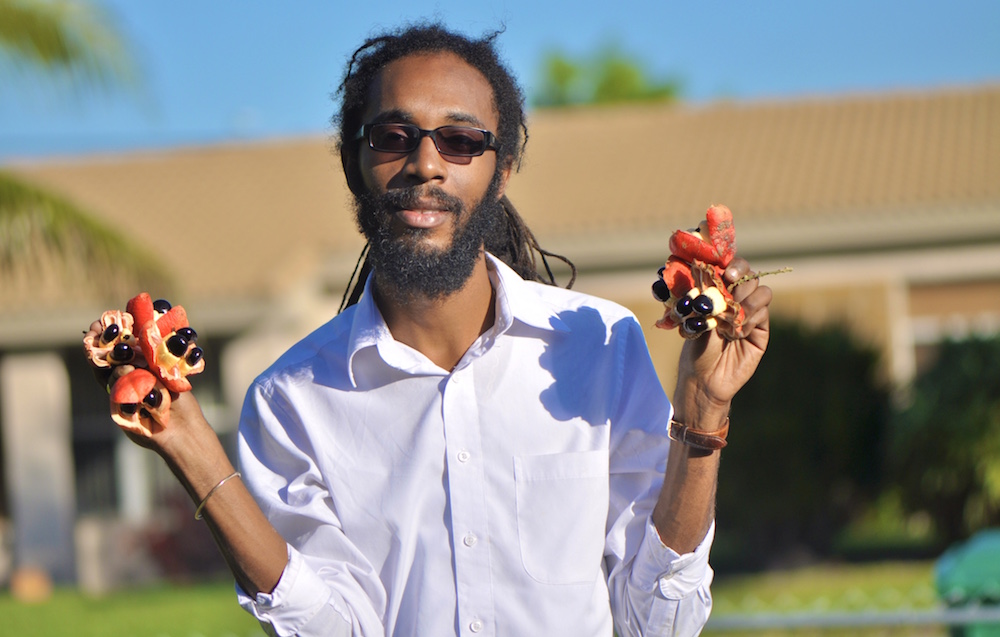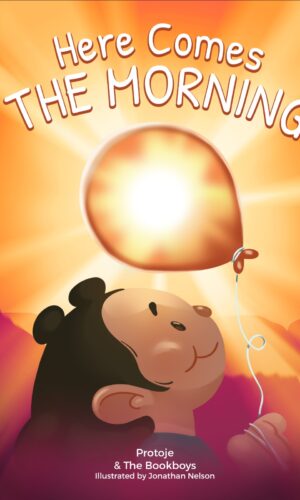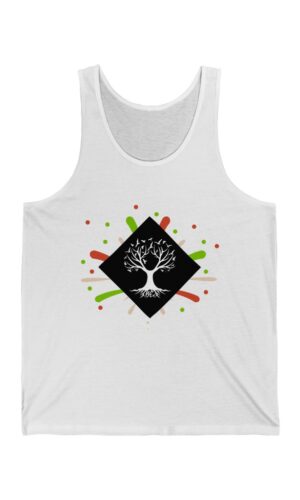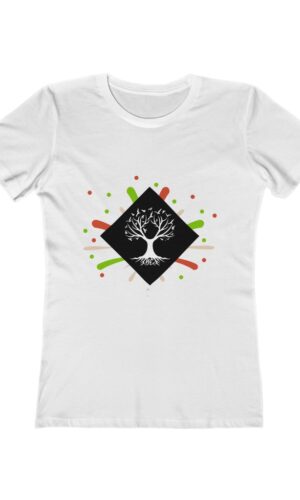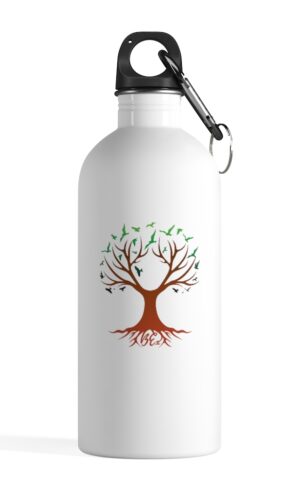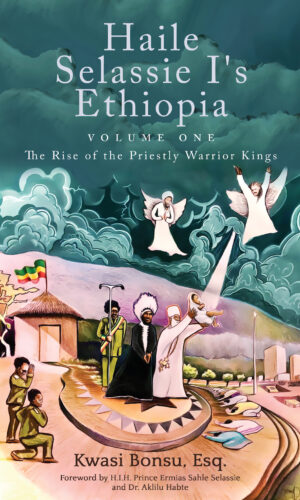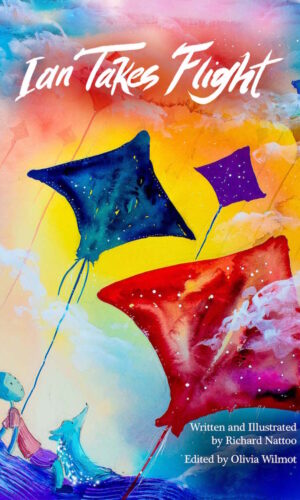Interest in agriculture is surging as humanity reawakens to the things that matter in life. As it becomes more necessary to put our hands in the dirt, we are fortunate to have ones like Dr. Machel Emanuel, who is not only a scholar in the field but has also had real experience in actual fields. He reminds us that horticulture and crop science are serious disciplines with implications for food security, environmental justice and more. We also pick his brain about his favorite plant: cannabis sativa.
What is your background and upbringing?
I was born and raised with my parents and two sisters on the island of Dominica – not the Dominican Republic but the Commonwealth of Dominica, which is considered the nature island of the Caribbean. On my parents’ citrus estate, I pretty much grew up knowing farming. If you know Dominica, it’s a very green, mountainous, lush country. In my generation growing up, you were pretty much immersed with nature, from scuba diving the champagne reef to snorkeling with sperm whales to hiking the volcanic peaks to swimming the various rivers and waterfalls. I attended primary and secondary school there, and then migrated to the United Kingdom where I enrolled in Cambridge Tutors College and sat four A-Levels: biology, chemistry, mathematics and business studies. During my tenure there I was sent on work experience where I was introduced to many valuable techniques in the area of botanical sciences.
After finishing sixth form, I returned to Dominica and spent a couple years practicing sustainable agriculture and cultivating a range of crops, including cannabis, in the mountains of Bells, a place known as Jacko Flats. The area was named after a runaway Maroon chief named Jacko who came from the Guinea Coast of West Africa. He had escaped from the Castle Comfort Estate in the late 1760s and resided on a plateau for over forty years before being captured. He was paraded through the capital, Roseau, and hanged in public. For me at 18 years old, living off the grid provided a level of groundation and teaching at that time of my life. I only consumed locally grown organic produce from the land. It was a real experience learning how to survive and craft out a living based on a self-sufficient lifestyle.
How was transitioning from life in the hills to a life of academia?
That definitely took some adjusting. I started off my university education in Barbados at the University of the West Indies, Cave Hill campus. That was my first time sleeping in a concrete building in some time! Then I transferred to the Mona campus, Jamaica. There I matriculated in the Department of Life Science, successfully completing a Bachelor of Science in Zoology and Botany, then went on to do a Master’s of Science in Plant Production and Protection, and then completed a PhD in Botany in the area of Postharvest of Tropical Fruits and Vegetables. The title of my thesis was ‘The Physiological and Biochemical Modifications of Ackee Blighia Sapida during Ripening and Storage.’ Throughout my tenure pursuing the PhD work, I conducted some interesting studies and contributed to literature on that fruit. I have published three book chapters, ten peer-reviewed journal papers and was awarded the best oral presentation at the 3rd All Africa Horticultural Congress held in Ibadan, Nigeria, 2016.
What are some of your contributions regarding ackee, Jamaica’s national fruit?
I did some work in Mexico at Universidad Autónoma de Querétaro, conducting research in a phyto chemical and nutrition laboratory. There I discovered a rare omega fatty acid, omega-7, in the arils of the ackee fruit. Omega-7 is also known as palmitoleic acid and is known to have anti-aging properties of the human skin. Subsequently, I worked on some unique fructose oligosaccharides, which are prebiotic sugars that simulate the growth of healthy bacteria within your digestive tract. You know the whole craze of prebiotics in yogurts, ice creams and health supplements. The ackee fruit possesses these prebiotic sugars. So that was on the biochemical side of things.
And then I did the physiological work at the University of Florida in the Department of Horticultural Sciences, Laboratory for Postharvest Biology and Technology. Fruits are classified in two categories, which are climacteric fruits and non-climacteric fruits. In simple terms, a climacteric fruit like avocado, mango or sweet sop, you can pick it matured and you bring it home and it would ripen. A non-climacteric fruit would be like citrus, West Indian cherry or Otaheiti apple. If you pick it prior to being ripe, it will not continue to ripen on its own. You must pick it on the tree when it’s ripe. So, how you manage these two categories of fruit postharvest for commercial trading is critical to the quality assurance and level of postharvest waste incurred. Therefore, how it is transported, how it is stored and how it is displayed in the retail market would directly impact the earning potential by extending the shelf life and maintaining quality parameters. Ackee is, indeed, a climacteric fruit. I subsequently went on to look at its chilling sensitivity. I consume raw vegan cuisine, and ackee is seen as a cheese substitute. It may not have the taste of cheese but it definitely has the texture. So how best could we preserve ackee as a fresh commodity? It has been exported in a canned version, stored in brine, and there has been no innovation to that sort of postharvest packaging or processing since 1954. My intention was to work out how to extend the shelf life of fresh ackee arils for commercial sale. Investigating the chilling sensitivity was the next step because we know ackee is very perishable. It has a high respiration rate. If you pick it and put it in a plastic bag and close it, within minutes you will start seeing water vapor being settled. So it becomes a question of how you would reduce the temperature without inducing chilling sensitivity but still ensuring that the metabolic activity is slightly reduced to extend the shelf life. The research indicated that temperatures near refrigerated temperatures – about 5 degrees Celsius – causes ackee to be chilling sensitive, which is known for most tropical fruits. This means it becomes very placid and it gets water soaked. It’s not presentable or palatable at that stage, so we worked out that better qualities were retained at between 12 and 15 degrees Celsius. Anything higher, going up to like 18 or 20, or at room temperature, the fruit would be consumed by fungal mycelium. I went on to design a particular package for storing fresh ackee arils, known as modified atmosphere packaging, that allows for the diffusion of oxygen and carbon dioxide at the same rate as ripe ackee arils at the precise storage temperature, maintaining optimum conditions and ensuring quality attributes for up to twelve days.
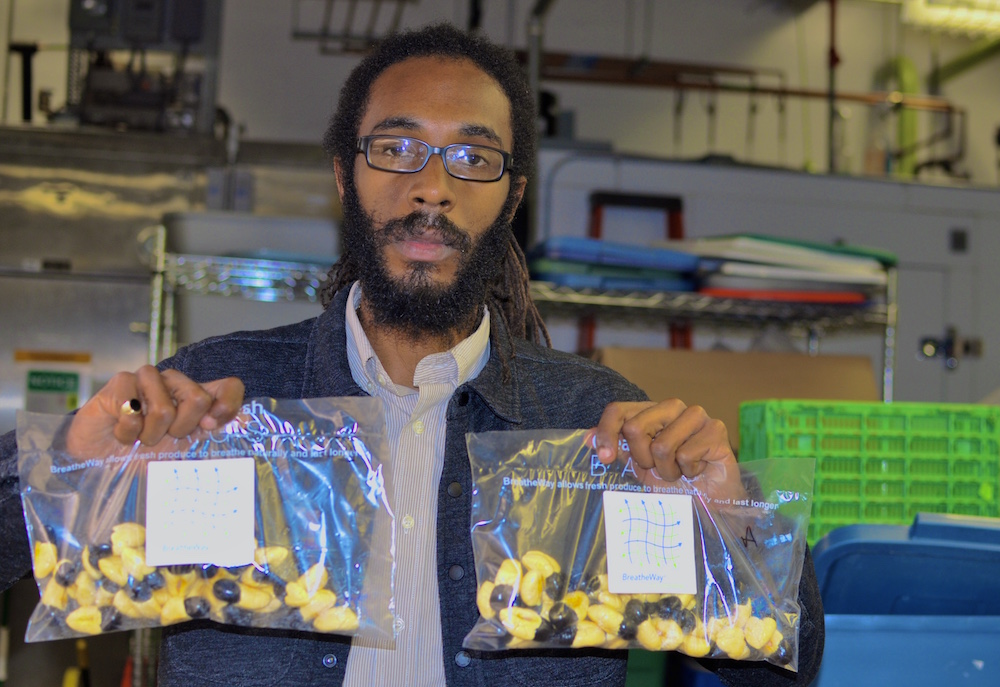
Dr. Machel Emanuel with packaging specially developed for storing fresh ackee. [Contributed.]
How did you become a leading Caribbean voice for ganja advocacy?
Being a cannabis enthusiast, cultivator, breeder and user, opportunity presented itself with the enactment of the Dangerous Drugs (Amendment) Act, 2015 in Jamaica, which facilitated the development of a cannabis industry. I began conducting cannabis research based on previous experiences as a traditional grower and horticulturist. How do we maintain quality assurance throughout the cannabis value chain? How do we ensure public health and safety and environmental stewardship? My contributions thus far have allowed me to contribute in both the public and private sectors. In July 2019, I was selected as the vice chair of the Bureau of Standards Jamaica, Cannabis Technical Committee. We launched three cannabis standards to serve the Jamaican cannabis industry: a cultivation standard, a packaging standard and a processing standard. I also have a team of dedicated students who are presently conducting a wide range of cannabis-related investigations. We are looking into cultivating cannabis sustainably in the tropics by utilizing the natural resources available in Jamaica, at the same time maintaining affordable cost of production while ensuring public health and safety with a high quality product that will exceed international scrutiny.
Do you have any recommendations for developing the ganja industry or the broader agriculture industry at the regional level?
Well, that’s a very interesting question because looking at the demographics of the Caribbean archipelago, some islands do have more natural resources than some. For example, some economies are based on tourism while some rely a bit more on agricultural production. The Caribbean is, however, no stranger to participating in large agro value chains, from sugarcane to banana to ornamental flowers to coffee to cocoa, and the list can go on. Cannabis has always been one within the informal sector that has created significant revenue but only a few Caribbean countries have that production reputation. Jamaica and Saint Vincent would definitely stand out in this regard. However, in terms of food security, agriculture and climate change, there’s a lot to contend with based on creating that sustainability throughout food production, first to feed your domestic population needs, then to also create an export oriented industry to generate foreign currency. It’s a very complex situation. We have seen what international treaties like the WTO ruled in terms of banana, and how the Caribbean lost preferential treatment to the European market, and that was very detrimental for all banana farmers. We’ve seen how international markets and influence can dictate some of these export oriented commodities.
Domestic supply is really critical because the Caribbean imports a ratio of more than 10-to-1 to supply domestic food needs. There has always been a lot of discussions surrounding import substitution and what local production could be done to reduce the import bill and such heavy reliance on the food supply coming from developed countries, especially the United States. We have to look at what sort of diet the people within the Caribbean consume. We know they consume a lot of starch like rice and a lot of flour. Therefore, we need to look at what sort of crops the population would be open to making substitute flour from – stuff like cassava or breadfruit – to reduce dependence on wheat.
To see that we have cannabis in the mix now as a commodity that is sort of driving economic growth, it’s interesting to see the demographics that exist with the traditional farmer who is, average, 50 years old versus the cannabis farmer who seems to be a lot younger and enthusiastic about plying the trade. I see it as a good opportunity to get back the youth within the framework of agriculture and developing that much needed competence.
The influence that not just agriculture but plants in general contribute to human well being can’t really be debated.
How can the youths of today think differently about agriculture?
I don’t think that it should be branded as agriculture because there is this perception that agriculture is a subsistence profession – you have a hoe, you have a cutlass, you have muddy shoes. Think of it from a more holistic perspective, as crop science and horticulture. You wake up in the morning and you have a bowl of cereal. You have grains, nuts and dried fruits from maybe three or four different continents in the world in one bowl. You take a walk with loved ones to a park, you see beautiful flowers filling the air with pleasant fragrances or there is a well-manicured lawn. You go to play football or cricket and the consistency of the playing field encourages you to play better. There’s a nice purple heart tree to construct your exquisite dinner table or drinks cabinet. The influence that not just agriculture but plants in general contribute to human well being can’t really be debated. But how do we now manage all these interactions for a more sustainable human existence? It’s definitely a lot more than just agriculture but how we sustain food production while still mitigating climate change and different aspects surrounding existence and quality of life. Everybody wants to be healthy. How do you sustain three meals a day? You have to grow crops. Plants sustain most, if not all life on this planet.
What are some practical first steps for people who don’t necessarily have agricultural experience but are interested in improving their relationship with the land in that way?
If you want to get involved with food production, there is no need to start on a grandiose scale. Everybody could grow something, no matter if you live in an apartment or you live on a huge expanse of land. The subtleness of planting, watching and nurturing that crop is possibly one of the most noble professions life has to offer. To see that it provides you with not just food but with medicine, with fresh air, with that hope of eating what you grow and sharing the harvest with your neighbors, that alone could change the demographics of how we perceive food. Not just going to the supermarket and purchasing what has no blemishes, what has been sprayed with a lot of synthetic chemicals, what looks pretty but what has not been through the rudiments of being immersed in the whole circle of life and nature. The holistic approach is not just for yourself but for maintaining proper environmental stewardship and not destroying nature whilst doing so.
Any words of caution for those who decide to take it seriously?
We know of the negative effects that agriculture has definitely had on the land. We have seen it in coffee, where the chemicals they spray get into the water system, causes eutrophication, lots of different runoff, pollution, degrading the soil by using way too much synthetics and broad spectrum pesticides that kills even the natural enemies. The approaches need to change to cultivating from a more ital, organic standpoint that really preserves the natural resources of the Earth while assisting in replenishing and restoring nature’s natural cycles. Anyone who wants to get involved really needs to be mindful of their purpose for getting involved in this sort of food production. First and foremost is to provide a healthy and sustainable alternative to what is currently out there.
What are your thoughts about the effects of technological advancements on agriculture?
Well, technology definitely has a place in contributing to more efficiency within the agricultural value chain. The question is how do we merge the indigenous knowledge that has been garnered throughout time from traditional farmers who intricately understand the climates, the soil types, the seasons, what sort of crops can be grown at various times of year. Those things are also very critical because you won’t be able to maneuver technology within the whole aspect of contributing along the value chain if the fundamentals have not been understood. How, why, where and when do we do things? This information pretty much comes from generations of indigenous knowledge passed on. We need to document a lot more of this oral history that has taken place for food production, medical preparations, how we keep the soil healthy, how we maintain a balanced ecosystem throughout cultivation, how we rotate crops based on seasons. There is a lot to learn but technology contributes significantly to the area of data collection in terms of molecular biology, building vertical and horizontal resistance in crops. Therefore, technology will definitely help us mitigate a lot of the challenges that we see being faced with climate change in terms of droughts, hurricanes or rainfall. It’s critical.
How we merge and balance technology with indigenous knowledge has always been the cornerstone of any developing country. We strive to focus on building more competence based on allowing ourselves to participate much further along the value chain. Rather than just being the producer, we can also be the processor and add value to these commodities so as to capture a larger scale of the value chain locally while, on the other hand, ensuring international competitiveness.
We see where Rastafari has been granted sacramental rights but, so much for sacramental rights because, in the Caribbean region, Rastafari has always been that face of cannabis… There needs to be a lot more advocacy for inclusion of an economic model for Rastafari to generate income from its association with cannabis.
Is Rastafari adequately represented in, and compensated by, the ganja industry?
That’s a very interesting question because Rastafari is in a very peculiar position where cannabis, ganja, marijuana reform is concerned. There is definitely the onus on the governing administration to recognize the contribution and sacrifice that Rastafari has made by being associated with cannabis from the time of Leonard Howell. His estate, Pinnacle, was the first Rastafari commune and ganja enterprise. It was a community where ganja was definitely the cash crop, generating sustainable income and livelihood for a vast number of individuals who lived there. It’s well known that when the police forces raided Pinnacle, they found a large cache of pound sterling. It has also been documented that cannabis from Pinnacle was sent to Winston Churchill’s England and it’s been rumored that Queen Elizabeth II used cannabis for her period pains. So, with the association between Jamaica and the Crown at that time, you could definitely understand the trade in cannabis being exported to England to serve medical needs and so forth. We’ve also seen what regional governments have done to Rastafari through demonizing cannabis and making it illegal. Because of that association, many Rastafari families have been broken with fathers not being there – imprisoned or having to go way up in the hills to cultivate the crop. It is one of the contributing factors of the current socioeconomic challenges within the Rastafari home and family structure.
Fast forward to decriminalization and legal cannabis, we have seen where the foreign direct investment model that Jamaica has created has definitely not allowed for the participation of Rastafari within that legal framework. I must commend Mark Golding, the Minister of Justice at the time, who saw the need to recognize Rastafari in cannabis reform. We see where Rastafari has been granted sacramental rights but, so much for sacramental rights because, in the Caribbean region, Rastafari has always been that face of cannabis. Prohibiting any economic enterprise to be created from sacramental rights does not really satisfy the overall objective based on the association of Rastafari and cannabis. There needs to be a lot more advocacy for inclusion of an economic model for Rastafari to generate income from its association with cannabis. The intellectual property issue surrounding cannabis branding, using Rastafari’s jargons and colors to market cannabis, Rastafari should be a beneficiary in some way shape or form. We see in Antigua where prime minister Gaston Browne enacted in law special provisions for Rastafari communities to engage in Cannabis enterprise, with the waiver of licensing fees. We look forward to the implementation of these provisions in the law because the Rastafari population has definitely suffered.
At the same time, Rastafari has a lot of experience and knowledge from cultivation, processing, medical and therapeutic preparations, and even administering these preparations. It’s going to be critical to see the role that Rastafari will play, not just along the value chain of this export-oriented commodity but more in the leadership of administering cannabis as a therapeutic, medical and sacramental substance. Healing the nation.

Dr. Machel Emanuel in Colorado, USA, standing in a field of cannabis. [Contributed.]
Should sacramental rights belong exclusively to Rastafari?
I am of the view that sacramental rights should not be granted to only Rastafari. It should be granted to everybody because you can’t limit fundamental human rights to a particular culture, people or way of life. If you take a drive through Jamaica, it is not only Rastafari people using ganja. Pretty much every socioeconomic strata within the country consumes cannabis. A lot more gains can be made here in the sacramental rights aspect. Other jurisdictions, such as Barbados, have enacted or drafted sacramental cannabis bills that have taken that aspect of Rastafari and recognized the right to use cannabis for sacramental purposes.
What is the most exciting fact that you have learned about any plant?
For a single species of plant, cannabis sativa contributes to almost every aspect of humans’ well being. Structurally, for example, hemp is the strongest natural plant fiber and it is believed that the Pyramids in Egypt were possibly constructed from hempcrete – a biocomposite of hemp and lime used increasingly in construction today. It also has medical, therapeutic, spiritual, recreational and nutritional value. Due to its association with humans for such a long time, it is one of the few crops that is cultivated in every climatic region of the world. No matter if you live in a very cold climate or you live at the equator, people are growing and consuming cannabis. We have patronized and developed an intricate understanding of the plant, and have learned to appreciate the wide array of its flavors, euphoria and purposes. The plant is not boring. It’s extremely exciting. Its contribution to civilization and humanity is so profound that I can’t really sit and explain it. There is so much more that we will discover in the upcoming generations about this plant.
What recent or favorite book(s) would you recommend to readers?
I like reading novels that I can relate to – Caribbean novels, African novels and, obviously, a lot of scientific stuff. I have read stuff like Brother Man by Roger Mais. Unburnable by Marie-Elena John is a nice book written about Dominica. I recently read Kalinago Blood by Alick Lazare, which gives an interesting perspective of how indigenous populations of the Caribbean used to operate. Dominica is the only Caribbean island with a thriving population of Amerindians, known as Kalinagos.
I’ve read a lot of Trinidadian writer V. S. Naipaul’s work, like The Mystic Masseur. Chinua Achebe’s Things Fall Apart is a legendary book and Ishmael Beah’s A Long Way Gone: Memoirs of a Boy Soldier is a good one too. I also enjoyed reading Born Fi Dead: A Journey Through the Jamaican Posse Underworld by Laurie Gunst.
There’s a book called The Nature of Crops: How We Came to Eat the Plants We Do by John M. Warren. It really shows that there are a lot of species of plants but we choose a very small population of plants to domesticate; and why we consume these plants and how that contributes to health and wellbeing in a broader sense.
If culture is the last stand, what is culture to you?
[Read for context: Culture is the last stand]
Culture to I is expression of who you are, how you live, how you communicate, how you eat, how you perceive life in general on this planet, how you exist with other living forms, how you perceive life’s diversity of color, shape, form and magnitude. It’s how we incorporate all these aspects of life from a broader sense of identifying self. That is culture to me. For example, Rastafari is something always rooted in Africa but if you look between the lines, the ideology of self definitely came from the Asian continent. The vegan diet, the consumption of ganja, even the word “ganja” comes from Asia. That idea of self is rooted in Hindu culture. However, the yoke is in Africa and Ethiopia, where Haile Selassie was crowned the conquering Lion of Judah, the place where man is said to make his first steps on earth.
Who are people throughout the African Diaspora (past and present) who have shaped or influenced you?
I must give credit to my family. My parents, my grandparents. They have definitely contributed and molded who I am today. My parents grew up in a Black power time, so they installed the Black freedom fighter in me by naming me after Samora Machel from Mozambique. This fighting spirit has allowed me to get ahead and even gives me the courage to defend cannabis and cannabis rights in the public forum today.
All the people who have come before me and set a particular path of advocacy, which has provided introspection for understanding who I am. People who set the pace for my contributions to be read and listened to today. They are very significant and I acknowledge that this work could not be done overnight. It’s a very dynamic approach to understanding self, knowing that we are people from a wide range of demographics coming together in this dispensation.

